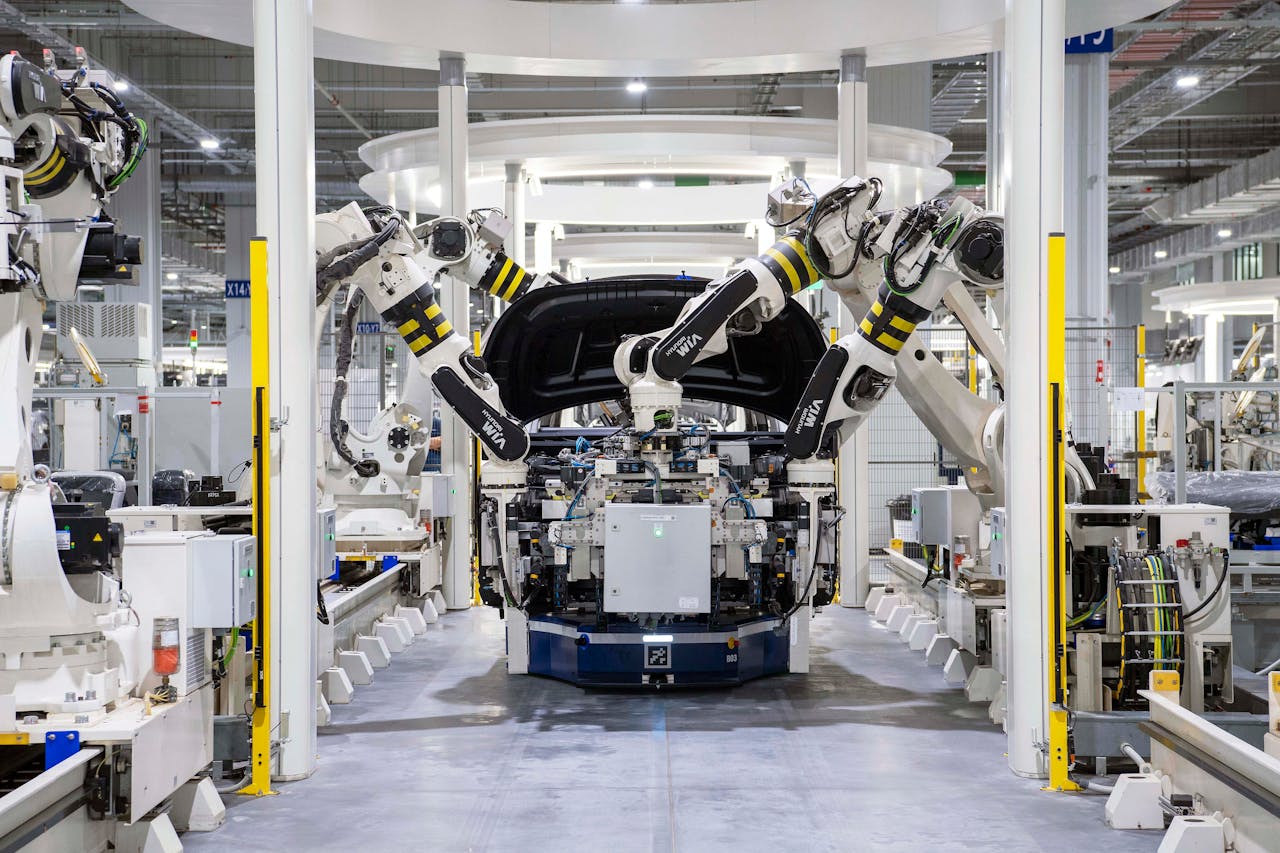Over the past few years, AI-powered scheduling has transformed how dealerships operate, significantly enhancing productivity. By embracing these innovative tools, you can streamline your operations, maximize staff efficiency, and better serve your customers. This post will guide you through five proven steps that can help you implement AI scheduling effectively in your dealership, ultimately driving your success in a competitive marketplace.
Key Takeaways:
- Implement AI tools to automate scheduling processes and reduce manual errors.
- Utilize data analytics to optimize appointment scheduling based on customer preferences and behaviors.
- Enhance communication channels to provide real-time updates and improve customer engagement.
Understanding AI-Powered Scheduling
AI-powered scheduling transforms how dealerships manage appointments by leveraging algorithms to automate and optimize booking processes. By integrating customer data and past interactions, these systems enhance efficiency, enabling you to allocate resources effectively and respond to customer needs promptly.
What is AI-Powered Scheduling?
AI-powered scheduling utilizes artificial intelligence to automate the process of managing appointments and resources. It analyzes various factors like customer preferences, dealership availability, and historical data to create optimal schedules. This technology reduces manual input and significantly minimizes scheduling conflicts.
The Benefits for Dealerships
Dealerships that adopt AI-powered scheduling see substantial improvements in productivity and customer satisfaction. Automated systems cut down on human errors, streamline the appointment process, and allow your staff to focus on higher-value tasks, leading to increased sales and a more organized workflow.
For instance, implementing AI scheduling can reduce no-shows by up to 30%, as automated reminders keep customers informed and engaged. Dealerships also report a decrease in appointment overlaps, leading to smoother operations and better customer experience. Enhanced data analytics provide insights into peak times and customer behavior, empowering you to make informed decisions that further optimize your service offerings.

Step 1: Assessing Current Scheduling Processes
Begin by examining your existing scheduling methods to identify inefficiencies that AI can address. Is your team frequently double-booking appointments? Are there gaps in the schedule that could be filled? A thorough analysis will help you understand your current workflow and reveal opportunities to enhance productivity. For further insights, explore 5 ways you can leverage AI in your dealership today.
Identifying Pain Points
Seek feedback from your staff regarding the scheduling challenges they face daily. Common pain points often include manual entry errors, scheduling conflicts, and inefficient communication tools. By pinpointing these issues, you can prioritize which areas AI should target for improvement.
Key Metrics to Analyze
Analyzing specific metrics can provide valuable insights into your scheduling performance. Look at appointment conversion rates, average time slots filled, and customer wait times to gauge efficiency. These metrics will help you understand current operations and how AI can optimize them.
Focus on metrics such as the ratio of scheduled appointments to walk-ins, average appointment duration, and cancellation rates. For instance, if your data shows a high cancelation rate, it may indicate a need for better customer engagement strategies. Additionally, tracking how many leads convert to appointments allows you to assess the effectiveness of your scheduling process. Insights gathered from these metrics lay the groundwork for a smoother transition to AI-powered solutions.

Step 2: Choosing the Right AI Tools
Selecting the appropriate AI tools for your dealership’s scheduling needs can significantly enhance operational efficiency. Prioritize solutions that integrate seamlessly with your existing systems, such as CRM and inventory management platforms. Evaluate how well the tools handle real-time data, customer preferences, and appointment reminders, all of which contribute to a smoother customer experience and increased productivity.
Features to Look For
Identify features that cater specifically to your dealership’s needs. Look for intuitive interfaces, multi-channel booking options, customizable workflows, and robust analytics capabilities. Tools that offer integration with virtual assistants can streamline customer interactions, while functions like automated follow-up messages ensure higher appointment retention rates.
Evaluating Vendor Options
When assessing potential vendors, examine their track records, customer reviews, and support services. Focus on how well they understand the automotive industry and their ability to provide solutions tailored to dealerships. A vendor with experience in similar businesses can offer insights and adaptations that generic software providers may lack.
Deep-investigate vendor portfolios by exploring case studies and success stories from other dealerships. Compare pricing structures and available tiers to find options that align with your budget while offering the necessary features. Reach out to current users for firsthand feedback about reliability and responsiveness, as support can be a game-changer during implementation and ongoing operations. This thorough vetting process allows you to select a vendor that not only meets your technical requirements but also enhances your overall scheduling strategy.
Step 3: Integrating AI into Existing Systems
Integrating AI into your dealership’s existing systems can significantly streamline processes, enhance efficiency, and improve customer experiences. Transitioning smoothly often involves connecting your AI scheduling tools with CRM and inventory management systems. This approach not only facilitates real-time updates but also ensures that all platforms communicate effectively. Consider exploring resources like Boost Dealership SMS Marketing: 5 Proven Strategies for … for further insights on tech integration.
Technical Considerations
Assessing your current technological infrastructure is vital before implementing AI. Compatibility between existing software and new AI solutions should be checked to avoid disruptions. Data security protocols must also be reviewed to ensure compliance, especially when handling customer information.
Training Staff for Adoption
Successful AI integration hinges on your staff’s ability to adapt. Training should encompass not just the technical aspects of the new system but also its practical applications in daily operations. Providing hands-on workshops and ongoing support fosters proficiency and confidence among team members.
For impactful training, employ a structured approach that includes interactive sessions tailored to different roles within your dealership. Use real-life scenarios that employees frequently encounter, enabling them to see the AI tool’s benefits firsthand. Moreover, encourage a culture of feedback during the training process, allowing adjustments based on employee experiences, which enhances overall adoption and satisfaction with the new system.

Step 4: Monitoring and Adjusting Performance
Monitoring and adjusting performance ensures your AI-powered scheduling evolves alongside your dealership’s needs. Regularly analyze scheduling metrics such as appointment accuracy and employee productivity to identify areas for enhancement. By leveraging real-time data, you can make informed decisions that optimize your scheduling strategy. For a comprehensive guide, check out 5 Steps to Successfully Implement AI in Your Car Dealership.
Continuous Improvement Strategies
Implementing continuous improvement strategies involves regularly reassessing your processes and AI settings. Set key performance indicators (KPIs) and use them as benchmarks to measure effectiveness over time. This proactive approach allows you to fine-tune scheduling algorithms and adapt to ever-changing customer demand.
Utilizing Feedback for Refinement
Utilizing feedback from staff and customers plays a vital role in refining your AI scheduling system. Gather insights through surveys or direct communication, focusing on user experiences and pain points. This feedback loop enables targeted improvements, ensuring that the system aligns with team expectations and customer satisfaction.
Incorporating insights from your staff who engage directly with the AI system can provide a wealth of information. For instance, if several employees report frustrations with appointment confirmations, you can adjust your AI’s communication protocols. Engaging with customers through follow-up surveys will also reveal how well your scheduling meets their needs, allowing you to fine-tune AI functionalities to enhance their experiences and streamline dealership operations effectively.
Step 5: Celebrating Success and Scaling Up
Reaching this stage means celebrating the improvements AI has brought to your dealership while also looking towards future enhancements. Sharing success stories can boost morale and foster a culture of innovation among your staff. Highlight the efficiency gains, customer satisfaction levels, and overall productivity increase achieved through AI-powered scheduling. Embrace continuous learning and prepare to scale your solutions across departments to maximize the benefits.
Measuring Productivity Gains
Evaluating the impact of AI on your dealership’s productivity requires specific metrics. Track appointment booking rates, no-show reductions, and customer feedback scores. Analyzing these data points provides insight into efficiency improvements and highlights areas for further development. This measurement process creates a feedback loop, shaping future strategies and ensuring continued growth.
Expanding AI Capabilities
After realizing initial gains, consider how to further enhance your AI capabilities. Explore additional features, such as predictive analytics, to anticipate customer needs and optimize scheduling. Investigate integrating AI with inventory management systems for seamless operations that can improve customer experiences. Regularly updating your AI models will keep your dealership competitive.
Investing in advanced AI tools, like machine learning algorithms, can tailor customer interactions based on past behaviors, creating personalized experiences that lead to higher conversion rates. You can also implement AI chatbots that handle initial customer inquiries, freeing up your staff for more complex tasks. This not only enhances customer service but also creates a more responsive sales environment. By continuously expanding AI capabilities, you position your dealership for sustainable growth and improved performance in a shifting market landscape.



